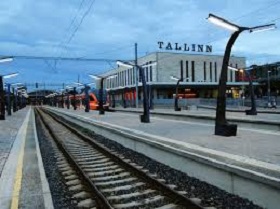Energy, Estonia, Good for Business, Railways, Transport
International Internet Magazine. Baltic States news & analytics
Tuesday, 16.12.2025, 14:14
Estonia: State planning to electrify railway network by 2028
 Print version
Print version |
|---|
Erik Laidvee, CEO of the state-owned Estonian railway infrastructure company Estonian Railways, said at a meeting of the Riigikogu's economic affairs committee on Monday that design work will begin next year and construction in 2022. The entire project is to cost approximately 300 million euros, most of which the state is hoping to receive from the European Union.
According to Laidvee, planning and preliminary design work for the electrification of the entire railway network is already underway. This will be followed by design work, the first stage of which is the Tallinn-Tartu section, where construction is to begin in 2022 and end in 2024.
In total, approximately 800 kilometers of railway needs to be electrified.
"We currently have the electrified section Tallinn-Aegviidu. Further electrification is needed up to Tartu and other border stations. The current grid we have is on three kilovolts and direct current. The new electrification will be 25 kilovolts and alternating current. By the end of 2028, all railway infrastructure in Estonia will be electrified," Laidvee said.
He added he is sure that the work will be completed by the set deadline.
Sven Sester, chairman of the Riigikogu's economic affairs committee, said that as of right now, the funding for the project should mainly come from the EU.
"It has to be taken into account that in addition to electrification, Estonian Railways has its annual renovation and updating needs, an additional 400 mдn euros during this period. Estonian Railways would certainly not bear it with its cash flow," Sester said.
According to Laidvee, electrification of the railway will result in CO2 savings comparable to 10% of the total CO2 emissions of road transport.








 «The Baltic Course» Is Sold and Stays in Business!
«The Baltic Course» Is Sold and Stays in Business!

